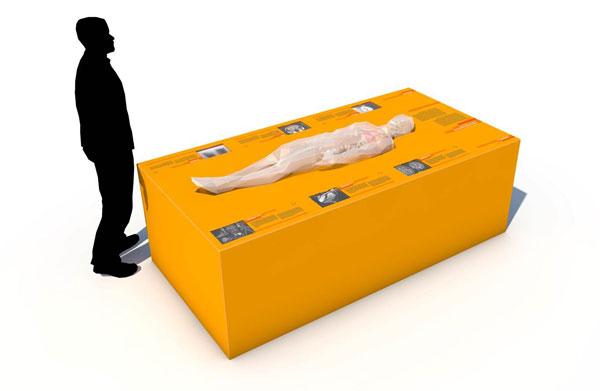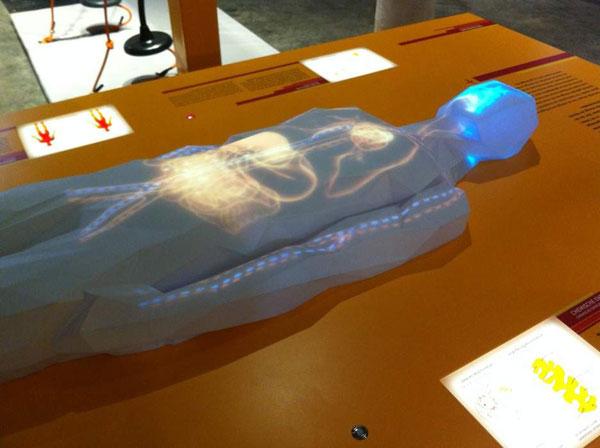 Imagine never having to remember to charge your phone before untethering yourself from a readily available source of energy and heading out into the cold, cruel world. And, speaking of cold, what if your body heat alone could power that phone? That’s no pie-in-the-sky sci-fi fantasy, actually. It’s a likelihood that’s not so far in the future. The average person generates about 100 watts of power when they’re not doing much of anything at all. When they’re doing something physically demanding like sprinting, some people can actually output as much as 2,000 watts of energy.
Imagine never having to remember to charge your phone before untethering yourself from a readily available source of energy and heading out into the cold, cruel world. And, speaking of cold, what if your body heat alone could power that phone? That’s no pie-in-the-sky sci-fi fantasy, actually. It’s a likelihood that’s not so far in the future. The average person generates about 100 watts of power when they’re not doing much of anything at all. When they’re doing something physically demanding like sprinting, some people can actually output as much as 2,000 watts of energy.
At Energeticon, a permanent exhibition space in a defunct coal mining complex in Alsdorf, Germany that focuses on energy-related topics, a life-size (1.7 meter-long), 3D printed transparent human body will soon be on display in an exhibit that demonstrates how our bodies produce and convert energy.
Rather than viewing ourselves solely as consumers, the exhibit aims to show, with the help of the 3D printed figure, that humans are basically mobile “power plants,” producing and supplying energy to their own bodies to keep the heart pumping, the neurons firing, and so on.
Materialise was tasked with printing the see-through figure, which consists of a single piece of translucent material. They accomplished this incredible feat by using what they call their Mammoth Stereolithograpy Machine. The technology is usually applied to car manufacture, but in this case it suited the requirements of the exhibit designers. It was developed in the context of rapid prototyping and, specifically, for producing large components without any gluing.

Mammoth Stereolithography, which is actually surprisingly fast, works much like the standard 3D printing process in that the object is constructed layer by layer from a liquid polymer, which hardens when exposed to a laser beam. With each pass, explains Materialise, “the laser printed layers are lowered together with the vessel’s resin level.” When the printing is complete, “a small reservoir moves over the vessel and [dispenses] a film of liquid polymer onto the whole [piece].” This process, called “curtain recoating,” is what distinguishes this new Mammoth Stereolithography from traditional stereolithographic technology, which instead uses a scraper.
The huge — or, mammoth — build volume capacity and the speed of the process are ideal for 3D printing large, single-piece objects, hence the desirability for auto manufacture and for Energeticon’s own Invisible Man. The exhibit, which focuses on the energy potential of the human body, fits perfectly with Energeticon’s larger goal: To shift our world view with regard to energy production and consumption. It’s no accident that Energeticon is located in a former coal mine.
“This atmosphere,” says the foundation, “serves as an intimate reminder about mining history” and the imperative to turn away from the use of “finite fossil fuels” and instead “look toward future energy technologies.”
They will look particularly sustainable, renewable energy sources like the sun. And the human body itself.
Check out the video below showing Mammoth Stereolithography in action. Let us know what you think about Energeticon’s use of the technology for their human “power plant” exhibit in the 3D Printed Life-Size Human Body forum thread over at 3DPB.com.
Subscribe to Our Email Newsletter
Stay up-to-date on all the latest news from the 3D printing industry and receive information and offers from third party vendors.
You May Also Like
IperionX Inks 10-Year Deal with Wisconsin Manufacturer for 80 Metric Tons of Titanium Per Year
IperionX, the Charlotte-based supplier of sustainable titanium powders used for additive manufacturing (AM) and metal injection molding (MIM), has signed a ten-year deal with United Stars, a group of industrial...
Gastronology Launches Industrial Production of 3D Printed Food for Dysphagia Patients
Food 3D printing has, in many ways, been an additive manufacturing (AM) segment looking for the right business case. While some applications are beautiful and others may or may not...
Lockheed Martin Leads $3M Investment in Q5D’s Electronics 3D Printing System
Q5D, an original equipment manufacturer (OEM) of robotic arm, hybrid additive manufacturing (AM) systems used for wire harness production, has closed a $3 million investment round. The investment arm of...
3D Printing News Briefs, April 6, 2024: Depowdering, Cybertruck Door Handles, & More
In today’s 3D Printing News Briefs, ioTech’s digital manufacturing CLAD technology is opening up opportunities for microelectronics and additive manufacturing. Hexagon and Raytheon Technologies commercially released the Simufact Additive Process...
































